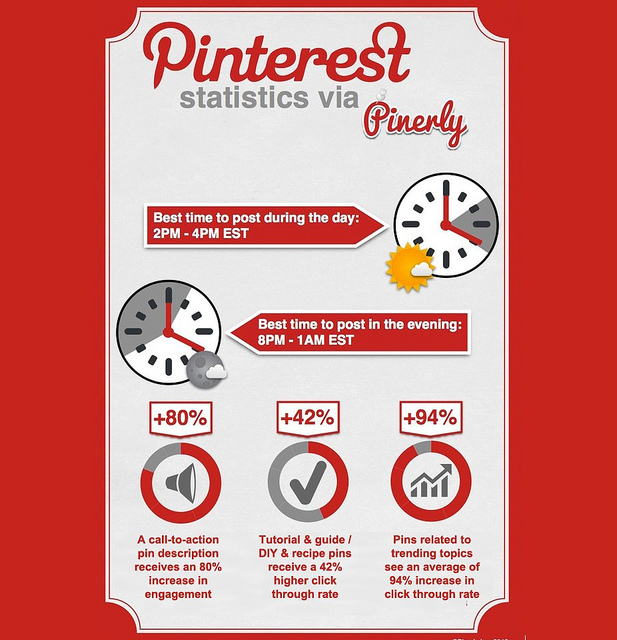How to Use Pinterest in 2018… for Profit!
By Angel Burns
Yes, you have heard of it, but do you use it? Do you use it for business? Besides making pretty collections of pictures, how can you market your brand with it?
Pinterest is one of the main social media platforms today, but less familiar to most than Facebook, Twitter, YouTube, LinkedIn, Instagram and SnapChat. Still it is the 6th most popular according to DreamGrow (November, 2017), and an expected growing platform as 2018 Social Media Marketing Trends show its increase as personalized content.
Because it is a lesser-used platform, Pinterest could be your green pasture to till for fresh leads.
Let’s look at what it is, how it works, and finally, how it can work for your business interests.
First comes appreciating its appeal, reviewing its capabilities, then comes the strategy.
Did you know?
Deciding to market on Pinterest means considering its demographics. According to Pinterest stats (Omnicore, 2018):
• over 30% of all U.S. social media users are Pinterest users
• 81% of users are FEMALE (although 40% of new signups are male)
• 67% users are under 40
• MILLENNIALS use Pinterest as much as Instagram
• Pinterest generates over 5% of all website referral traffic
• 80% of users access it from mobile devices
• 2/3 of all pins represent brands and products
• 93% of active pinners use it for purchase planning
• 87% have bought something because of Pinterest!
Just take a moment to let those numbers sink in. This is a huge captive market!
Another important Omnicore statistic shows that most users have healthy incomes: half earn over $50K per year, and 10% make over $125 per year. This may qualify your target market too.
If this gets your urge to sell going, let’s understand how the platform works.
The basics:
Pinterest began in March 2010 and is headquartered in San Francisco. It charming history by cofounders Ben Silbermann, Evan Sharp and Paul Sciarra has turned them into billionaires.
Pinterest is a scrapbooking platform that allows users to clip, or “pin,” found images to a collection, or “board,” for later review. The boards can be shared publicly or with followers, and each image can also direct viewers to websites, for more information or purchase.
Available as a mobile app as well as a desktop application, the first step is to create a profile for business.
Pinning can begin by browsing Pinterest by subject or simply exploring, clicking on images to add to your own boards. These can be named and groups according to topic, and hidden for privacy. From there they can be shared.
Brands will want to create their own pins to populate their boards, and test engagement by subtopic and image.
The biggest draw to using Pinterest, particularly for product sales, is with BUYABLE PINS. With this feature, viewers can not only save favorite pins but swipe up to see an item’s price and drop it into a shopping cart right from the platform!
Note that sellers must get approved by Pinterest to have buyable pins, and then it takes about a week for their board to activate. You must have a Pinterest business account to be considered, but good news: these are FREE and offer analytics.
Here’s how to set this all up:
• Business accounts: https://www.businessnewsdaily.com/7552-pinterest-business-guide.html
• Buyable pins: https://www.socialmediatoday.com/social-business/how-setup-buyable-pins-sell-products-direct-pinterest
Also, sellers can advertise these pins with featured paid ads known as Promoted Pins, to get more viewing. Expand reach, without annoying potential customers with distracting intrusive ads. Choosing pins to promote should involve some strategic considerations.
Now, sellers can connect with influencers to create campaigns using Promoted Pins:
Consider the three types of Promoted Pin Campaigns: Traffic, Engagement and Awareness.
Since most customers access Pinterest on mobile devices in addition to computers, they can use Apple Pay or a credit card to complete the transaction. The best part is that sellers don’t lose a cut of the sale to Pinterest: they get to keep the whole amount! Zounds! I mean, $$$$!
Brand examples:
There are brand success stories to emulate.
These are favorites that may be familiar: Six consumer brands with picture-perfect Pinterest strategies
It’s always good to see how other successfully gain followers and create engagement. Check out some top Influencer boards to learn from. Notice how compelling imagery is used to share links and consistency creates expert curator status upon the best pinners.
Not all are static product shots. There are advice tips, quotes, how-tos, detailed and behind-the-scenes angles of events; anything to serve as inspiration. Consider ideas that SELL.
Links shared can be to blog posts, to websites to build email marketing lists, or best of all, e-commerce shops for processing sales directly.
Strategy:

Source: https://goo.gl/images/pXiDik
Anna Bennett is a Pinterest Marketing Expert, chosen by Pinterest itself as an Elite Business coach. Using Pinterest to rank number one on Google, she offers marketing and coaching services (https://www.whiteglovesocialmedia.com/pinterest-marketing-for-business/), plus is the author of the Pinterest Marketing for Business Master Course and How to Become a Pinterest Account Manager. She lives by the motto: “Those on the top of the mountain did not fall there.”
Here’s Bennett’s illustrious advice:
“It is very important to realize that Pinterest is not a social media website like Facebook, it is a search engine like Google. People go on Pinterest to plan, look for solutions or look for things to buy.
Therefore, it is vital to identify who your target audience is and what their needs & problems are. Ask yourself “am I creating content that connects with my target audience by helping them achieve their goals or solve one or more of their most pressing problems?’”
So, she is saying to become customer outcome-focused, so your pins will be relevant. Also, since Pinterest is a search engine, keywords are vital to being found.
Here’s an in-depth article on keywording: Pinterest Search – 11 Smart Places to Use Keywords for Better SEO
Keep in mind places Pinterest utilizes keywords: username, profile/business name (the one customers are most familiar with) and About section. Choosing the correct category is important too.
New features to integrate:
Bennett explains the Pinterest LENS:
“The visual lens is a camera located on the right side of the Pinterest Search bar on your mobile device. When you take a picture using the visual lens Pinterest will then show you other ideas inspired by the picture you took. Visual searches on their (Pinterest) platform have increased 74% year-over-year.”
Imagine…with so many using their mobile phone as a camera, it is becoming a primary search tool and a better one, for showing not just products, but ideas how to use them. *HINT, HINT!
Bennett continues with a caution:
“A second thing, according to Pinterest is that the advertising is going to be less and less about keywords or interests to target. Instead, it’ll be about using visual signals behind the scenes to create more useful, relevant and results-driven advertising.”
Anna forecasts this as, “very powerful for verticals like home decor and fashion.”
Leveraging Pinterest for best engagement and brand awareness:
The first step is having quality pins that people want to save and share.
- Canva is a FREE software tool, that helps with content-creation. It available as an app on iTunes, making professional looking pins with stock images, graphics, templates and free icons with a drag-and-drop method that lets you use your own images too.(Now you won’t need to hire a graphic designer!)
Engagement depends on frequent consistent posts, and luckily there are scheduling tools to help with that. The top ones are:
• Tailwind
• ViralTag
• Hootsuite
• Buffer
• Boardbooster This one creates secret boards that no one can see or access, but your collected pins on one board can then be individually scheduled to a public board. It’s free for the first 100 scheduled pins and then either plans start at $5/month to schedule 500. You can loop pins to re-pin old ones to the same board, while automatically deleting lesser performing ones. Especially helpful is testing for broken links and duplicates, to improve pin quality.
With so many tools to automate the process, and a burgeoning market interest, Pinterest could be the next big thing for marketing your brand. Pin and profit!

Source: https://goo.gl/images/QePnoY
About the Author: Angel Burns is a photographic artist and film producer, from Los Angeles. She holds a B.A. degree in Advertising & Public Relations, and is pursuing a Master of Arts in Mass Communication at the University of Florida. In her free time, she can be found cheering for her two performing daughters, or roaming the globe.
Other recommended readings:
Pin Your Way To Success: How Pinterest Is Changing The Game For Marketers
Why You Need To Know Your Audience
Posted: March 28, 2018
Category: Digital Marketing, Social Media, Student Work, UF CJC Online Blog
Tagged as: best practices, branding, business, content creation, expert, keywords, lens, marketing, Pinterest, social media



